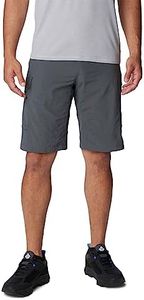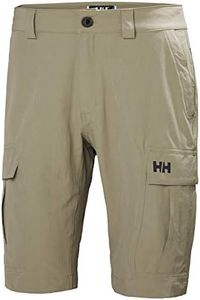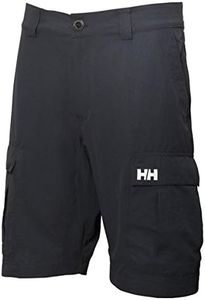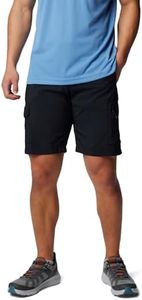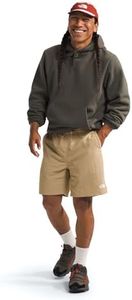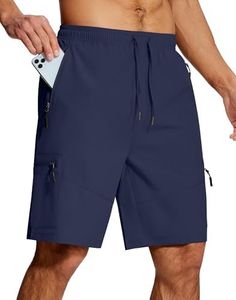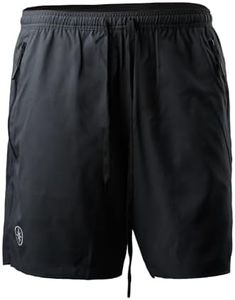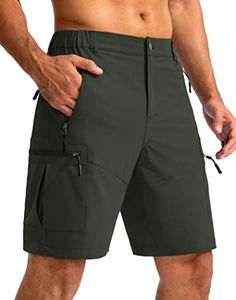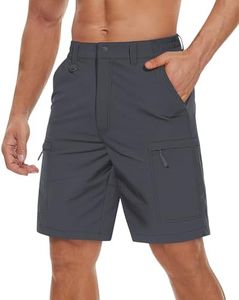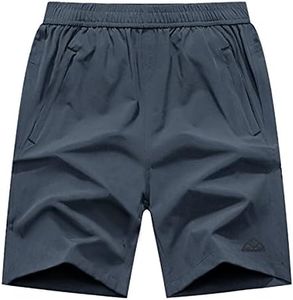We Use CookiesWe use cookies to enhance the security, performance,
functionality and for analytical and promotional activities. By continuing to browse this site you
are agreeing to our privacy policy
10 Best Mens Hiking Shorts
From leading brands and best sellers available on the web.Buying Guide for the Best Mens Hiking Shorts
When choosing men's hiking shorts, it's important to focus on comfort, durability, and practicality. The right pair should match the climate you hike in, the type of terrain you'll face, and your personal preferences for fit and mobility. Understanding the main features can help you ensure that the shorts you pick will support you on all of your outdoor adventures.MaterialThe material of hiking shorts determines their comfort, breathability, and durability. Most hiking shorts are made from synthetic fabrics like nylon or polyester, which are lightweight and dry quickly, or blends that may include some cotton or spandex for extra stretch. Lightweight synthetics are best for hot climates and fast-drying needs, while those with added stretch offer a better range of movement for more challenging hikes. Consider what conditions you'll be hiking in most often—if it's hot and humid, prioritize breathability and quick-drying materials; for rougher trails, durability might matter more.
Fit and LengthFit and length affect how comfortable and practical your hiking shorts will be. Shorts range from slim to relaxed fits and inseam lengths typically range from about 5 to 11 inches. Shorter shorts (around 5-7 inches inseam) provide more airflow and are cooler, but offer less protection from sun and brush. Longer shorts (9-11 inches) protect your thighs better and are helpful on overgrown trails, but may feel warmer or more restrictive. Choose the fit and length that best matches your mobility needs, comfort preference, and typical trail conditions.
Pockets and StorageThe number and placement of pockets influence how conveniently you can carry small essentials. Some shorts just offer basic hand pockets, while others include secure zippered pockets or cargo pockets for storing items like a map, phone, or snacks. If you like to keep items easily accessible, look for shorts with multiple or specialized pockets. For minimalists or those using a backpack, basic pockets might be enough.
Waistband TypeThe waistband affects comfort and how well your shorts stay in place while moving. Options include elastic waists, integrated belts, or standard button/zip setups. An elastic waistband or built-in belt offers easy adjustability, which is great for long hikes and fluctuating comfort needs. Standard waistbands look more casual but may require additional adjustments during activity. Think about which option will be most comfortable for all-day wear and whether adjustability is a priority for you.
Water ResistanceWater resistance refers to how well the shorts repel water and dry after getting wet. Some shorts feature water-repellent coatings (often called DWR), which help them shed light rain or splashes, while others are more absorbent. If you hike in rainy climates or near water, water-resistant shorts will keep you more comfortable and dry. If you only hike in dry areas, this is less crucial.
UPF RatingUPF stands for 'Ultraviolet Protection Factor' and measures how much UV radiation a fabric blocks. Hiking shorts with higher UPF ratings help protect your skin from sunburn, which is important on sunny trails with little shade. Shorts with UPF 30 or above are considered good at protecting you from the sun, and this might be an essential spec if you spend a lot of time outdoors in bright conditions.

